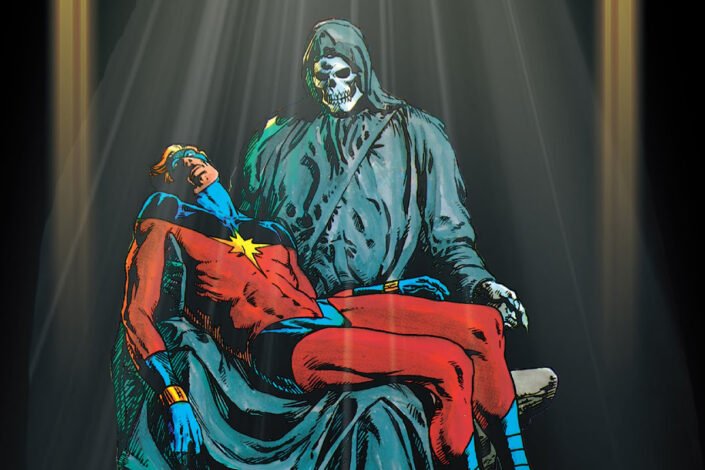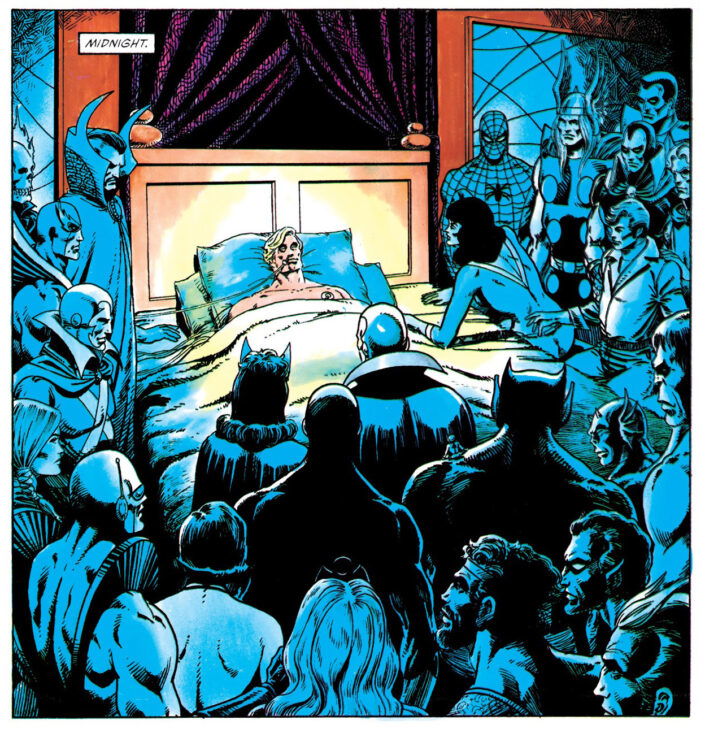
In the world of comic books, death and resurrection have become commonplace. For a long time, there was a common saying amongst readers that was “everyone comes back except for Bucky Barnes, Jason Todd, and Uncle Ben.” Or a variation of it. However, this saying had to change after 2005, when both Jason Todd and Bucky Barnes came back.
Although the deaths of some superheroes have had a significant impact on the industry, few had the emotional impact of The Death of Captain Marvel, which was written and drawn by Jim Starlin.
Mar-Vell, the unsuccessful introduction of Cosmic Hero
Some heroes are created to fight evil and make the world a better place, while others are created as a business strategy to secure the rights to a name. Captain Marvel falls into the latter category. Fawcett Comics published comics featuring Captain Marvel (now known as Shazam) from 1940 to 1953. However, when the trademark lapsed, Martin Goodman at Marvel Comics saw an opportunity. In 1967, the publisher introduced their own Captain Marvel and quickly trademarked the name.
While Stan Lee and Gene Colan are credited as creators of the character who made his debut in Marvel Super-Heroes #12, neither of them were involved in his development. Colan considered Captain Marvel to be “an imitation of any of the other costumed characters I’d ever done,” (Secrets in the Shadows: The Art & Life of Gene Colan), and Lee quickly handed the task over to Roy Thomas.
Captain Marvel quickly headlined his own series (in May 1968) where Marv-ell was established as an alien belonging to the Kree race who arrived on Earth. However, the character failed to gain popularity among the audience. To improve the situation, Roy Thomas and artist Gil Kane revamped the character with a new costume, greater abilities, and the addition of Rick Jones as a sidekick.
Despite these changes, the character still struggled to find an audience and the title was canceled in 1970. In 1972, the title was recommenced under Jim Starlin, who also revamped the character. While Jim Starlin’s stories are celebrated today, Captain Marvel still failed to attract readers at the time. The title was mostly produced to maintain the trademark. Captain Marvel was finally canceled with issue #62 (May 1979), with some unpublished issues.
If Captain Marvel failed to succeed while still alive, he finally found recognition with his death…
How to Kill a Superhero, The Tragic Death of Captain Marvel
In 1982, Marvel editor-in-chief Jim Shooter wanted to create a new line of graphic novels, inspired by European publishers. As explained in American Comic Book Chronicles: The 1980s, these graphic novels would be larger and more expensive than typical comic books.
The first book in the line was The Death of Captain Marvel, written by Jim Starlin and published in January 1982. Shooter approached Starlin to kill off Captain Marvel so that a new version of the character could be created.
In an interview with Near Mint Condition, Starlin recounted that he had initially drafted four or five different plots in which the character dies from heroic actions at the end. He couldn’t stop thinking that this kind of ending had been done before and he wanted to create something unique. Starlin’s father had passed away from cancer about a year before, and writing the graphic novel soon became a form of therapy for him. (Jim Starlin Interview, CBR)
Far away from some heroic sacrifice, The Death of Captain Marvel tells the story of Mar-Vell, a Kree-born soldier who is facing his imminent death from cancer that he contracted due to exposure to nerve gas during one of his past adventures. As Mar-Vell’s health deteriorates, the Marvel superhero community comes together to support him, but they are powerless against the disease. Meanwhile, the Skrulls, Mar-Vell’s greatest enemies, also pay their respects to him.
The Death of Captain Marvel is a unique and poignant story that explores themes of grief and mortality and the limits of power in the face of illness. This story is Jim Starlin’s personal favorite and has become Mar-Vell’s defining tale, selling out eight print runs and totaling 200,000 copies.
Today, The Death of Captain Marvel remains one of Marvel’s most iconic stories, and Mar-Vell’s death is one of the most memorable in comic book history. Unlike many other heroes, Mar-Vell has never been permanently resurrected, as doing so would be seen as disrespectful to the emotional impact of his death.

